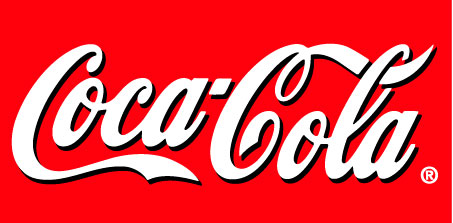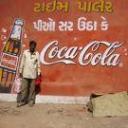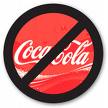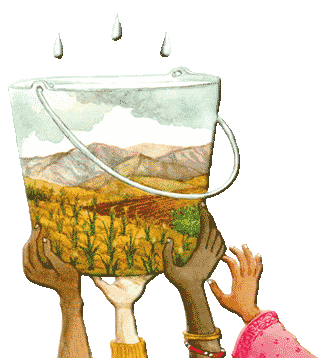
Coca Cola’s operations have been blamed for exacerbating or causing stress on local water resources in some less developed countries. Review and discuss the evidence.
Coca-Cola is the world’s largest beverage company offering more than 400 brands in over 200 countries. Multi-national corporations such as Coca-Cola are synonymous with globalisation and renowned for prioritising economic growth over environmental and social well-being. In their pursuit to maximise profits Coca-Cola has been accused of exacerbating local water resources in some developing countries. This essay will review and discuss the evidence for such claims using India as an example.
Coca-Cola was banned from India by the Indian Government in 1977 but was allowed to return in October 1993 after agreeing to certain regulations. As India becomes increasingly Westernised, the popularity of Coca-Cola soft drinks and Kinley bottled water has soared, particularly amongst the younger generations and urban elite. Coca-Cola India, comprising of Hindustan Coca-Cola and Bharat Coca-Cola, now includes 27 company-owned bottling plants and 17 franchisee-owned bottling plants. Although there are benefit from the economic growth that Coca-Cola brings, the water shortages and pollution are having severe effects on the local people and environment. Such water issues are particularly devastating in India as the country already suffers from water pollution and severe droughts, in both urban and rural areas. Most affected are the marginalized and low-income communities, landless agricultural workers and women.
Coca-Cola’s unsustainable mining leaves little water for locals, and the little water that villagers are able to access is often polluted, either directly or via contaminated vegetation and soil. The locals are often left with water that is of inferior quality in terms of taste and smell. Over 50 Indian villages are experiencing severe water shortages as well as contaminated groundwater and soil and Coca-Cola’s excessive water consumption leaves aquifers and springs dry, lowers the level and pressure of local wells and draws water from reservoirs. This lack of water leaves agricultural land poorly irrigated and infertile and reduces the water available for domestic use, leading to ill-health, famine and financial hardship. Villagers are forced to walk miles to access safe drinking water whilst Coca-Cola can access almost unlimited water through pipelines. The situation is set to worsen as changes in the product mix and the growth in Coca-Cola coffee and tea products may result in more water-intensive operations, as shown by the slightly higher total water use for 2006. Tribal and farming representatives have called for measures to ‘protect traditional sources of drinking water, preserve ponds and water tanks, and maintain navigable waterways’.
Local fears that Coca-Cola are causing, and exacerbating existing, water problems are certainly not unfounded. Coca-Cola’s bottling plants extract up to 1.5m litres of water from the ground per day and it takes nine litres of clean water are to manufacture just one litre of Coke. Following the opening of a the Coca-Cola plant at Kaladera in 1999, the water table level below ground fell from 12 to 37.5 metres. The Central Ground Water Board, a government agency, confirmed that the declining water table was a result of Coca-Cola’s mining of the water, and also blamed the company for causing ecological imbalances in the area. M.V.R. Mineral Water and S.R. Minerals, both contract bottlers for Coca-Cola’s bottled water Kinley, extract 132,000 litres of water each day from the surrounding area to operate the plant in Arthur Village. The bottling units are located in an area that has been designated environmentally sensitive because of the area’s importance to the water security of the region and the city of Chennai . Ironically, most of the water taken by Coca-Cola’s plants isn’t even used to manufacture drinks – of the 2.5 million litres of ground water that Coca-Cola’s bottling plant in Nemam, Tamil Nadu extracts each day, more than 70% is used for washing bottles, equipment and floors.
Coca-Cola’s bottling plants discharge saline and contaminated wastewater into the environment, polluting water resources including major rivers such as the Ganges. A Coca-Cola factory at Singhchancher, a village in the Ballia district of eastern Uttar Pradesh, has caused long-term pollution to water and land in the area due to wastewater effluent and pesticide residue. In many villages, public health authorities have been forced to post signs around wells and hand pumps advising the community that the water is unfit for human consumption. In India Coca-Cola’s water use ratio is 4:1 so that 75% of the freshwater it extracts is turned into wastewater. Coca-Cola claim that they adhere to strict rules and regulations to return wastewater to the environment after it has been treated to a safe level and to their credit, in 2006, 83% of their facilities did meet the wastewater standard . However, waste management is inconsistent as the company usually leaves waste management to local authorities which are inefficient and unreliable, and in 1999 a Coca-Cola factory in Goa operated for more than 40 days without adequate waste treatment systems. BBC Radio’s ‘Face the Facts’ programme claimed that there are high levels of the toxic metals cadmium, lead and chromium in the sludge discharged from Coca-Cola plants when bottles are cleaned, a claim which was supported by the findings of The Central Pollution Control Board of India in 2003. To aggravate the problem, the company donated the sludge to local farmers for use as fertilisers, further contaminating water supplies.
As a result of the water issues that have been discussed, alongside the fact that Coca-Cola’s activities conflict with Indian moral and religious traditions, which promote environmental stewardship, Coca-Cola has met widespread opposition. This resistance has been particularly marked in areas surrounding Coca-Cola plants as these are the people most affected. One of the most renowned battles was that in Plachimada, a village in the Palakkad district of the southern state of Kerala. The Plachimada plant, which opened in 1999, was one of Coca-Cola’s largest bottling facilities in India. Prior to the construction of the Plachimada plant, the area was a successful agricultural community, but following the opening of the plant 260 wells ran dry and agricultural yields declined . In December 2003, after ongoing local opposition and media coverage, the High Court limited the quantity of water that Coca-Cola could extract and ruled that Coca-Cola had to seek alternative sources of water. The local village council (panchayat) refused to re-issue a license to Coca-Cola and the plant was closed.
The Coca-Cola company feel that they are being victimised by political groups that are using environmental concerns as an excuse to attack Coca-Cola and globalisation. To their credit, Coca-Cola has actually improved its’ water use efficiency by more than 19% since 2002 and there has been a 4% reduction in the water use ratio. The company claim that the water shortages are a result of reduced rainfall and high temperatures, a claim which is supported by findings from The Central Ground Water Authorities and The Centre for Water Resources Development & Management (CWRDM). A report into the Plachimada plant, released in October 2002 by the National Geophysical Research Institute in Hyderaba, concluded that: “There was no field evidence of overexploitation of the groundwater reserves…any aquifer depletion cannot be attributed to the water extraction in the plant area’. Indeed, the wells continued to dry up for months after the factory had been closed down. Coca-Cola India will obviously have some localised effects on communities and their water resources. However, the beverage industry is actually responsible for less than one-half of one percent of total water usage in India, making it one of the most efficient users of water in the country and ‘a typical Coca-Cola plant uses just two or three bore wells for its water needs and extracts the water with pumps of a similar capacity as those used by other industries and farmers in the same community’ . In fact, State Government figures have confirmed that in some areas, including Rajasthan, the construction of a Coca-Cola plant has resulted in a decreased decline in groundwater levels, and in some cases, such as Varanassi, has resulted in a rise in groundwater levels.
Coca-Cola is also one of the few companies in India to be involved in water management schemes that actually improve the water situation in India and have in fact received several environmental awards including the Bhagidari Award in 2007. The company set up the Coca-Cola Foundation to work with communities to improve water conservation and have made a Water Conservation Pledge to reduce, recycle and replenish water-resources. The company is involved in several projects which improve the use and management of water in India, including The Agricultural Water Initiative and the reconstruction of a dam in Andrha Padesh . The company has also funded the construction of 300 rainwater harvesting structures which ‘replenish local aquifers and recharge the groundwater tables’ and create ‘an annual groundwater recharge of more than 3.75 million litres’ . Coca-Cola needs water and good publicity and so such projects may be forms of tokenism, but nevertheless, many people do benefit from the initiatives. However, whether this is enough to make up for the problems that Coca-Cola is causing for current and future generations remains to be seen.
As a conclusion, although I disagree with the opinion that the water shortages and pollution issues in India are solely the fault of Coca-Cola, I think that they play a major role in the nature and extent of the problems. India clearly has water issues irrelevant of industrial development and some evidence against the company may be misleading, scientifically unfounded or politically-driven. However, it is evident that the company are creating water-resource problems and exacerbating existing ones, and even if water shortages are due to climatic factors, Coca-Cola shouldn’t be operating bottling plants in areas that cannot even meet the drinking water and agricultural needs of the local communities. Environmental regulations in India are often lax due to poor enforcement, and a desire to keep a competitive advantage over other countries means Coca-Cola rarely has to take responsibility for the environmental damage it causes. The issue is very complex and India’s environmental conflicts are ‘enmeshed into global politics’ and economics. Higher socio-economic groups have access to bottled water and soft drinks whilst lower socio-economic groups barely have enough water to survive. The government has a responsibility to protect water resources for the public rather than to allow what is essentially the privatisation of water. In the words of Sawai Singh ‘Water should be available for drinking and agriculture, not for industries that have no social use’. Coca-Cola needs to stop treating the issue as a public relations problem and take moral and corporate responsibility for the environmental and social degradation that it is responsible for.
Related links:
http://www.environment.about.com/od/waterpollution/a/groundwater_ind.htm
http://www.edie.net/news/news_story.asp?id=11172&channel=0
http://www.thecoca-colacompany.comhttp://www.coca-cola.com
http://www.coca-colaindia.com/
http://www.guardian.co.uk/water/story/0,13790,1012193,00.html










Leave a comment